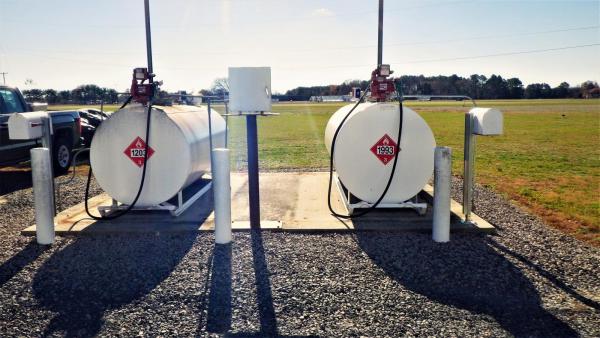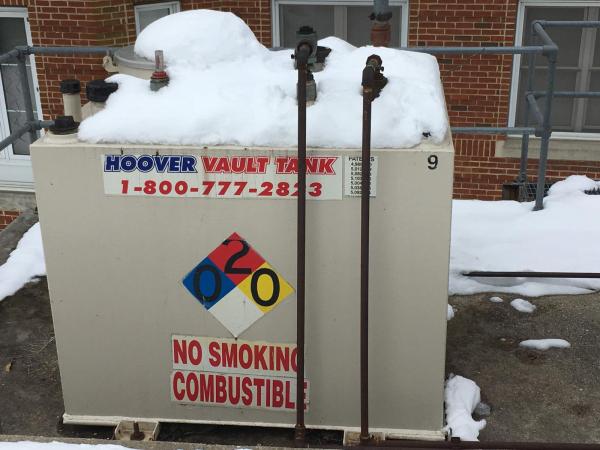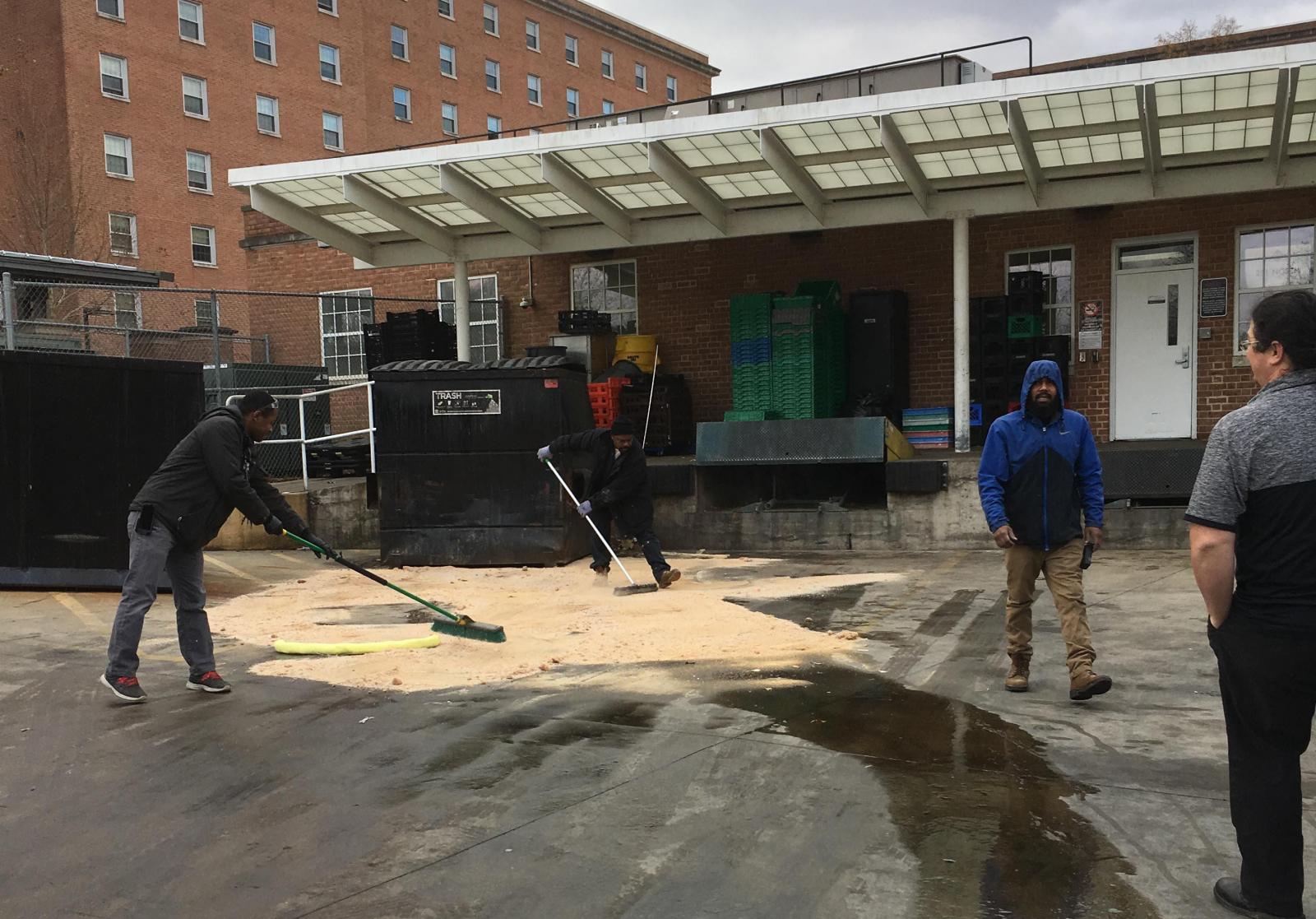Oil Operations and Management
Proper oil storage and handling are crucial for the safety of the University of Maryland. Just one quart of oil can contaminate up to a quarter million gallons of drinking water or cause an oil slick almost 2 acres in size. A spill of only one gallon of oil can contaminate a million gallons of water. In order to protect human and environmental health, the Maryland Department of the Environment (MDE) created the Oil Control Program (OCP). The OCP within the Land and Materials Administration of MDE regulates oil-related activities in the State, such as aboveground and underground oil storage facilities and oil transportation. Facilities storing oil in aboveground storage tanks (ASTs) with aggregate capacities of 1,000 gallons of used oil or 10,000 gallons or more of virgin oil are required to have an oil operations permit (OOP) issued by the OCP. The University of Maryland falls within those aggregate capacities. The University of Maryland auxiliary locations, such as the agriculture research farms, fall under the Water Resources Reform and Development Act (WRRDA) provision.
How much oil does the University of Maryland Campus have?
The University of Maryland has over 600,000 gallons of oil storage around campus. In order to comply with federal and state regulations, the University has to obtain and enforce 2 separate oil operations permits (OOP). These permits require the inventory of all the aboveground storage tanks (ASTs), drainage maps, spill control measures, and a spill prevention control and countermeasure (SPCC) plan.
How many ASTs does the University of Maryland have?
UMD currently has within its inventory: 75 ASTs, 144 transformers, 101 hydraulic elevators, and a revolving number of 55-gallon drums. It is important whenever an AST of 55-gallons or more is added or removed, the ESSR staff is notified. The SPCC needs to be updated each time a tank is added or removed, even if it is temporary.
What does goes into an SPCC plan?
An SPCC plan consists of 5 main components:
-
Description of the physical layout and a facility diagram;
-
A key personnel contact list including the contact information for the facility response coordinator, clean-up contractors, and all appropriate agencies to contact in the event of a spill;
-
The prediction, rate of flow, and total quantity of oil that could be discharged (tank failure or spill) if the potential for discharge exists;
-
A description of containment and/or diversionary structures to prevent an oil spill from reaching navigable waters; and
-
A description of the University's site-specific spill prevention and control measures in place.
What should I do in the event of a spill?
The University of Maryland and it's affiliated properties (IBBR, Severn Building) have in place an oil spill response procedures in the event of an oil spill. In the event that an oil spill is observed and no UMD staff is present, please call the number below. You can also refer to the Report a Spill page.
Is there any training I can take?
The SPCC rule ( § 112.7 (f)) dictates that, at a minimum, a facility should train their oil-handling personnel in the operation and maintenance of equipment to prevent discharges; discharge procedure protocols; applicable pollution control laws, rules, and regulations; general facility operations; and, the contents of the facility SPCC Plan. Training should be held, at a minimum, once a calendar year. ESSR provides online access to the trainings available below.
To report a spill:
 UMD Agriculture Research Farms
UMD Agriculture Research Farms
The University of Maryland has eight (8) auxiliary research farms located across the state. Under the SPCC rule, a farm is defined by the EPA as "a facility on a tract of land devoted to the production of crops or raising of animals, including fish, which produced and sold, or normally would have produced and sold, $1,000 or more of agricultural products during a year.” Prior to 2014, farms were regulated under the SPCC rule. On June 10, 2014, the President signed into law the Water Resources Reform and Development Act (WRRDA) on the SPCC rule and farms. This act affected the aggregated storage limits for farm facilities which would trigger the SPCC rule. In addition, the WRRDA affected the storage totals which would trigger the P.E. certification versus self-certification. All 8 of UMD auxiliary research farms currently do not surpass the threshold limits to trigger the requirement for an SPCC plan. However, as a flagship university, a modified volunteer SPCC plan has been created and implemented at each farm.

 UMD Oil Permits and Plans
UMD Oil Permits and Plans